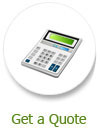Our Clients / Project Sites



























































































 Download Brochure
Download Brochure Download PPT
Download PPT Case Studies
Case Studies
SSA >> Facility Management Solutions >> CCTV, Access Control etc.
CCTV, Access Control, Perimeter Fencing etc.
CCTV Cameras:-

The primary function of a CCTV camera is to convert light into a video signal; all CCTV cameras require an optical lens to focus the light onto an image sensor located directly behind the lens inside the CCTV camera. There are two types of image sensor available, a CCTV camera with a CMOS (Complementary Metal- Oxide Semiconductor) image sensor chip and the other more common type that uses a CCD (Charge Coupled Device) imaging sensor chip. The majority of CCTV cameras and Video Camcorders use a CCD imaging sensor, whereas CMOS imaging sensors are more commonly used in webcams, budget home security cameras and digital photography cameras. CCD cameras are capable of creating a much clearer and higher resolution image. Different types of CCTV cameras are Board Cameras, C Mount Cameras, IR Cameras, IP Cameras, Zoom Cameras, Speed Dome Cameras. All CCTV cameras require a power supply; these are usually 12 volts DC, 24 volts AC or 240 volts AC.
ACCESS CONTROL SYSTEMS:-


Depending upon the configuration of the premises, one or more readers may be used. If more than one reader is used then it is called a Networked system, which is usually connected to a PC. Some systems use 8 core or 16 core wires for connecting all the Readers while some systems use only 2 core wires, thereby reducing the cost of wiring and maintenance. The better systems have readers that can be used interchangeably in a standalone or a networked configuration. Also, some systems have bulky controllers attached to the readers that require a separate source of power as well as add to the cost. The current day readers have built-in controllers and can be directly connected to a PC. Another use of Proximity systems is to record attendance for employees. For recording attendance, minimum two readers are required - one for IN and one for OUT. The employees are supposed to show their cards to the appropriate Reader upon arrival or exit. These transactions of IN and OUT are recorded in the attached PC. From the PC various reports can be printed. Most of the Access control systems come with ready made attendance software as an option.








